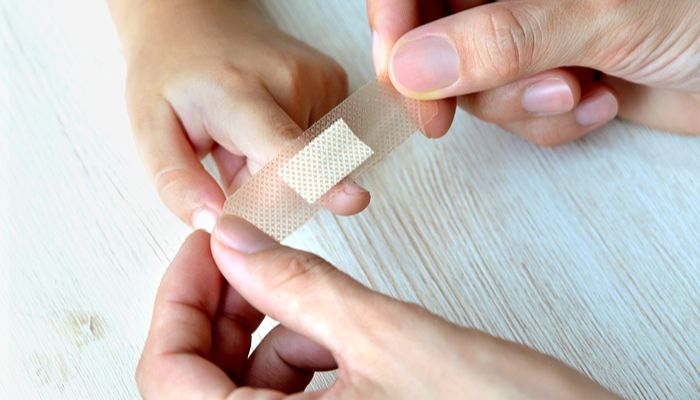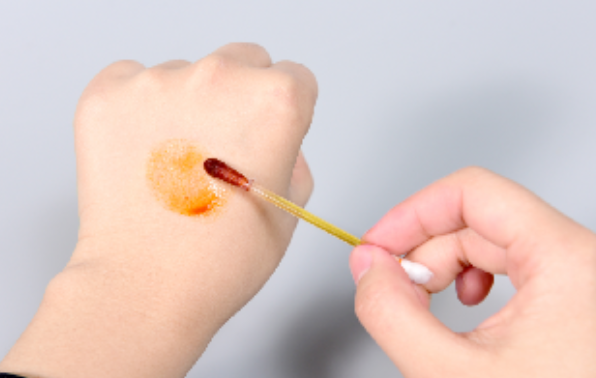Iodine tincture, which I believe everyone has used, is a kind of iodine-containing disinfectant, such as falls, burns, or daily disinfection, you can use iodine tincture to disinfect and reduce inflammation. How much do you know about how to store iodine tincture? Let's take a look at it together.

Basic properties of iodine
Iodine tincture, also known as povidone iodine, is an iodine-containing disinfectant in the form of an aqueous solution with a unique brown-red color. Its disinfection effect mainly depends on the released free iodine, which can quickly destroy the cell wall of bacteria, thereby achieving the purpose of sterilization. The bactericidal mechanism of iodine tincture includes destroying the cell wall and cell membrane of bacteria through oxidation and combining with biological macromolecules such as proteins and enzymes inside bacteria to inactivate them. This dual mechanism of action gives iodine tincture a rapid and efficient bactericidal ability.
The pH value of iodine tincture is usually close to neutral, which makes it less irritating when applied to the skin and mucous membranes and easy for patients to accept. In addition, the low-concentration solution of iodine tincture is light brown and does not easily stain clothing, further improving its convenience of use. However, the stability of the iodine tincture solution is poor and needs to be prepared before use. It should be avoided from contact with silver, aluminum, and divalent alloys because iodine tincture is corrosive to these metals. The iodine tincture stock solution should be stored at room temperature away from light to maintain the stability of its active ingredients. Under normal conditions of use, iodine tincture has a significant irritating effect on the mucous membranes, and a few people may have allergic reactions. Misuse reactions include oral overdose, which may cause corrosive gastroenteritis-like symptoms, and high-concentration iodine tincture contact with the skin and eyes may cause burns, ulcers, etc. Severe allergic reactions may cause laryngeal edema, asthma-like attacks, or shock. Therefore, when using iodine tincture, the contaminated eyes or skin should be rinsed thoroughly with clean water immediately. If the symptoms cannot be relieved or worsen, a specialist hospital should be consulted. After oral ingestion poisoning, a large amount of starch or rice soup can be taken, and attention should be paid to the prevention and treatment of laryngeal spasms and pulmonary edema. When an allergic reaction occurs, give anti-allergic drugs and symptomatic treatment.
Storage conditions of iodine tincture:
1. Environmental requirements:
The storage environment of iodine tincture is crucial to its stability and effectiveness. According to existing studies, iodine tincture should be stored in a dark, dry, and cool place to avoid evaporation or deterioration of the solution. This is because the complex iodine in iodine tincture is volatile, and under light and high-temperature conditions, the concentration of iodine tincture will decrease, affecting its disinfection effect.
2. Container sealing:
The tightness of the iodine tincture container is also the key to maintaining its effectiveness. Once the bottle cap is opened, the active ingredients in the iodine tincture will gradually evaporate into the air, resulting in a decrease in concentration. Therefore, the bottle mouth should be closed immediately after use, and the cap should be tightened to avoid exposure to sunlight or high temperature and other factors that affect the quality of the drug.
3. Validity period:
The shelf life management of iodine tincture is also important to ensure its disinfection effect. Unopened iodine tincture usually has a shelf life of about 2 years, but after opening, its shelf life will be shortened. The shelf life of small bottles of iodine tincture is generally about 7 days after opening, while the shelf life of large bottles is 30 days. After this time, the effective iodine content in iodine tincture will drop significantly, and the disinfection effect will be greatly reduced, so it is not recommended to continue using it.

4. Avoid contamination:
When storing iodine tincture, you should also avoid contamination of the bottle mouth by other tools. It is recommended to use specially matched cotton swabs or gauze to dip iodine tincture to reduce the risk of contamination. Once iodine tincture is contaminated, using it to disinfect the wound will not only fail to kill bacteria but may bring bacteria in the iodine tincture into the wound, causing infection.
It is recommended that in the home or medical environments, you should choose individually packaged iodine swabs and avoid direct sunlight and high-temperature environments. When using, pay attention to check the shelf life to ensure the disinfection effect of iodine swabs.
For more information on Innomed® Silver Ion Dressing Textile Fiber, Refer to the Previous Articles. If you have customized needs, you are welcome to contact us; You Wholeheartedly. At longterm medical, we transform this data by Innovating and Developing Products that Make Life easier for those who need loving care.
Editor: kiki Jia

 English
English عربى
عربى Español
Español русский
русский 中文简体
中文简体








